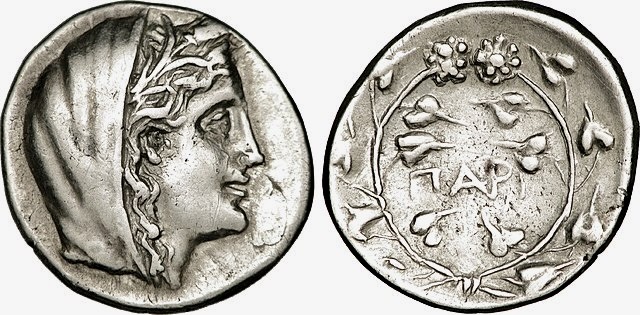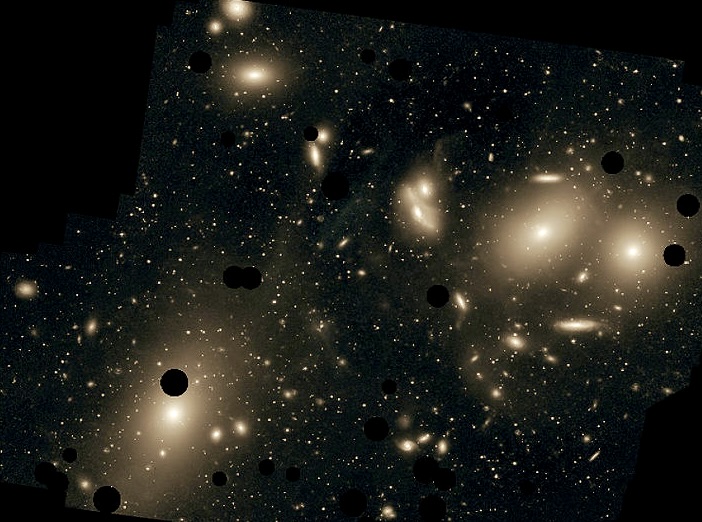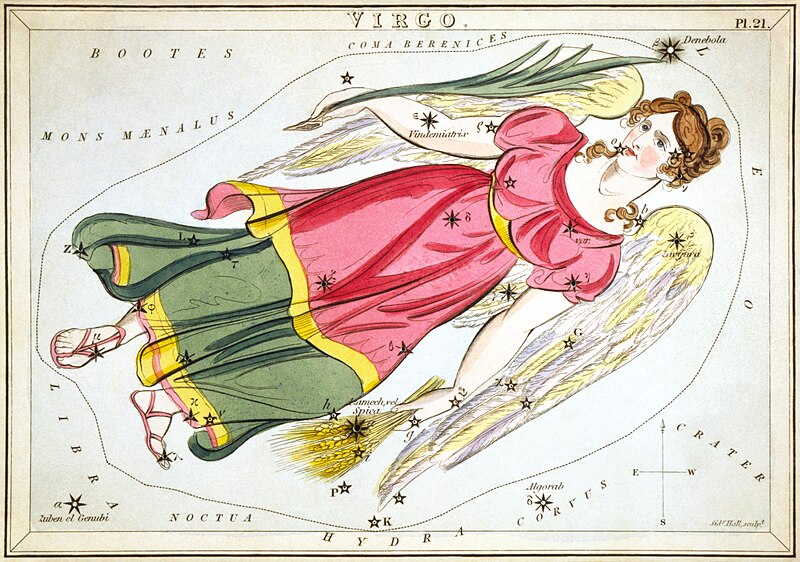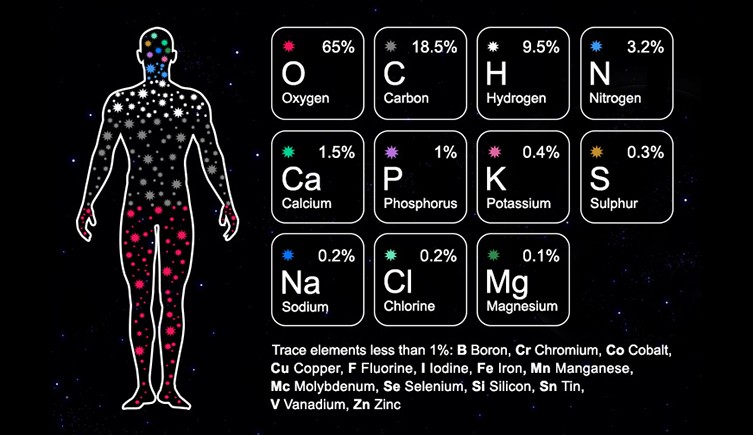Confetti and cheers for the astrological sign Virgo
I’m riffing on the astrological sign of Virgo for you for my self-declared Virgo celebration time! It’s currently Virgo season, the last part of summer when, here in the US, a good deal of plant life is shifting colors from green to golden or ruddy tones. The transitional time of seasons is the area of the mutable signs—Virgo being the third of the calendar year. Mutable is one of the terms for an astrology sign’s energetics; the sign’s way of using and expressing its elemental nature. The other two energetic modes are cardinal and fixed (which I won’t dive into now).
I’m showcasing Virgo as a celebration especially for the lovely readers with a Virgo birthday (Virgo Sun) people, as well as those of you who have a Virgo Moon or Virgo Ascendant. For these Virgos especially, I want to expand your understanding of your signature sign. Virgo has rich mythological and symbolic associations. I’m going to unveil some of those here. But no FOMO here, okay? The rest of us have Virgo somewhere in our chart. The house where Virgo resides in your chart contains the qualities and meanings I’m sharing here. As a general starting point, let’s remember that Virgo is the mutable earth sign. Its earth sisters are Taurus as the fixed earth sign, and Capricorn as the cardinal earth sign.

Meanings of the Mutable Mode
Let’s learn more about the meanings of the term mutable. Mutable signs demonstrate their energy, expression, and ways of being in the world as being adept, balanced, and flexible; comfortable with paradox; and the ones who can pivot or change directions, actions, or plans quickly and sometimes seemingly effortlessly. Now, to those of you with lots of fixed signs in your chart make-up, mutable energy may appear to you as flaky or indecisive. Cardinal people can view mutable energy as being idealistic, picky, detailed, or too careful and considered.
However, mutable signs entertain not just two sides of an idea, but multiple sides and can adapt to shifting perspectives or emotional states within themselves and others, while contemplating many different ideas & ways of taking action! Whew! There’s always a lot going on inside the heads and hearts of people with strong mutable energy. Mutable energy is also about completion, endings, actively getting something done, wrapped up, or finished. This makes perfect sense because mutable signs (Gemini, Virgo, Sagittarius, Pisces) herald the time when the current season is coming to its necessary end in order for the next season to begin.
Astrological Associations for Virgo
Now let’s unpack Virgo as a mutable earth sign. Astrological associations of earth are tied to our bodies, physicality, and the Earth itself; the material, tangible, and tactile parts of life; the depth and breadth of landscapes or environments. Virgo expresses all of these characteristics, but in distinctive ways. Picture Virgo’s earth characteristics as sand—both the singular grain of sand as well as shifting sands found in dunes, playground areas, beaches, and deserts. This analogy shows you that Mercury-ruled Virgo is exceptional at paying attention to details, spreading out information and gathering data into new sculptural forms. Sand is pliable and movable, yet very substantial when it piles up. Virgo uses it’s mercurial mental abilities in its analytical and gathering mode for the purposes of bringing in information to sift it, categorize, process, and put all that information into its rightful, insightful place.
Sand is easily lifted and moved about by air and water. Virgos love to have meaningful conversations and be informed about all sorts of topics. They are typically avid learners and can process a ton of information if necessary. They’ll examine their beliefs, systems, and processes as well as a community’s or business’s, or culture’s. Additionally, sand is a soil that’s essentially hard because it’s made of tiny, tiny, discrete, rocks! Right? So that sense of compact dense hardness within the Virgo self can appear in small, resilient, unbreakable ways. The hard strength of sand can be sifted through your hands, but it’s also difficult to firmly hang on to. You have to loosen your grip and allow the sand to settle in your palm. I think that’s true of Virgos in relationship also. Being open to allowing—instead of forcing or controlling. Virgos and sand—they both need to be able to flow and move.
Above all, Virgos are all in regarding craft, handiwork, and excellence pertaining to anything or anyone they care about. Artisanal is a good word that fits Virgos. Virgo pays attention to detail to how things are done, how people and tools are handled, and where something can become even more beautiful with a little more effort. Virgo can switch between details and the grand vision quite easily—talents that not everyone possesses. They’re craftspeople of the heart.

Virgo in Myth

The constellation of Virgo has been associated with goddesses of plant life for millennia—especially grains—but certainly not only those. These goddesses, the Ladies of the Plants, the Great Mothers of the Grain, the Empresses of the Harvest are goddesses of the fields, meadows, marshes, bogs, gardens, and farms. They are goddesses of the grasses and the seeds: oats, corn, rice, wheat, quinoa, bokeh, barley, poppy, millet, sorghum, amaranth, buckwheat, fonio, rye, flax, hemp, teff. Thus, they are also the goddesses of bread, beer, wine, and other grain /seed ferments. Throughout world cultures, the power and importance of bread, herbal beers and wines, and practices of saving and classifying grains and seeds as part of the food cycle is massive.
Thanks to a 1st century Roman book, Astronomicon, we know that in that region of the world the Virgo constellation was considered to be Demeter (Crete, Greece, Cyclades islands, general Mediterrean). Some other Virgo goddesses are Ezina-Kusa (Sumer), Ceres (Rome, Italy), Chicomecottl (Mexico) Arinna (Hittite), Atargatis (Syria), Dewi Shri (Bali), Nokomis (Algonquin, Americas) and Zaramama (Peru). Some of these goddesses were strictly plant/grain goddesses while others had larger symbolic domains. The goddesses who belong to the Virgo constellation specifically represent the vast kingdom of plant life and generally symbolize the vital life force, fertility, nourishment, and healing capacities of all life.

In Western astrology, the constellation of Virgo is typically pictured as a winged woman holding a sheaf of grain (wheat/ barley) in her left hand—the bright star Spica (Latin meaning “ear of grain”)—and in her right hand, a date palm frond or a vined bunch of grapes—the star Vindemaitrix (grape mother/gatherer).
Besides goddesses, I want to highlight all the heroines in folk tales or fairy tales who were tested by a powerful goddess, witch, stepmother, or scheming king by being ordered to sort grain, poppy seeds, peas, or lentils from dirt, rotten grain, pebbles, or ashes. These are Virgo tests for the heroines! Naming the top three heroines—Cinderella, Vassilisa, and Psyche— each of them had be very discerning, patient, and willing to accept help from others she had befriended. Teamwork makes the dream work!
Each of these heroines had to have that fortitude and keen eye for this test and level of detail while sorting what belongs and what does not belong. And while we are praising these Virgoian heroines, let’s remember their intense determination to get such a tedious task done, and done well. They all passed the test! Life itself got sorted out and put back into its rightful order thanks to their courage and diligence.

Know Your Worth
Another Virgo association is being “the virgin.” This is tied to etymology—the meanings of words. Virgo (Latin), parthenos (Greek) and kanya (Sanskrit) mean “maiden”, i.e., a younger unmarried woman. Eventually maiden was patriarchally interpreted as virgin—specifically meaning not sexual, not being sexual, and not ever been in any sexual relations. That narrowed definition bled into being used as a type of literally imprisoning purity which devolved into being a patriarchally punitive term (and actions) against women and girls. However, thanks to women scholars in the 80’s and 90’s, we now know that originally, a maiden or virgin meant a person who was sovereign over their own selves. Sovereign means exalted, unlimited, possessed of supreme power or authority—power that cannot be checked or undermined by anyone else. Being sovereign is the empowerment that comes with being solely and completely in charge of our own selves. That’s why so many of the powerful goddesses across the world were unmarried, had children all by themselves, had plenty of sex and paramours, and were clearly regarded as the highest deities of their regions /lands. This is a profound mythological part of Virgo.
Mythology and fairy tales vs. cultural propaganda or lies. It’s important to know our stories and where they came from as well as how they have been distorted or twisted in the past. I hope by sharing my passion for mythology and its intersections with Virgo, you now know and can recognize that personal sovereignty was considered divine and unbreakable and can be again.
Virgo Astronomical Facts
Finally, I have to include some wonderful astronomical facts about the skies above. Did you know that the Virgo constellation has some major star power? Well, read on for these fascinating facts about the Virgo constellation:
- It’s the largest constellation of the zodiac!
- It literally contains thousands of galaxies, collectively known as the Virgo Cluster. Take a look. Click the link.
- And, Virgo contains lots of known exoplanets (discoveries of them have boomed since the 1990’s.) Systems, baby! Virgo is overflowing with planetary systems.
Here’s a picture of Virgo with its stars blacked out so that the background galaxies are more easily recognized. It’s estimated that there are approximately 1,300 galaxies in this part of our cosmos! Pretty astonishing. Virgo—so unassuming and yet so amazing and powerful. Thanks for celebrating all things Virgo with me! Click here to tell me what your thoughts are or leave comments below.





